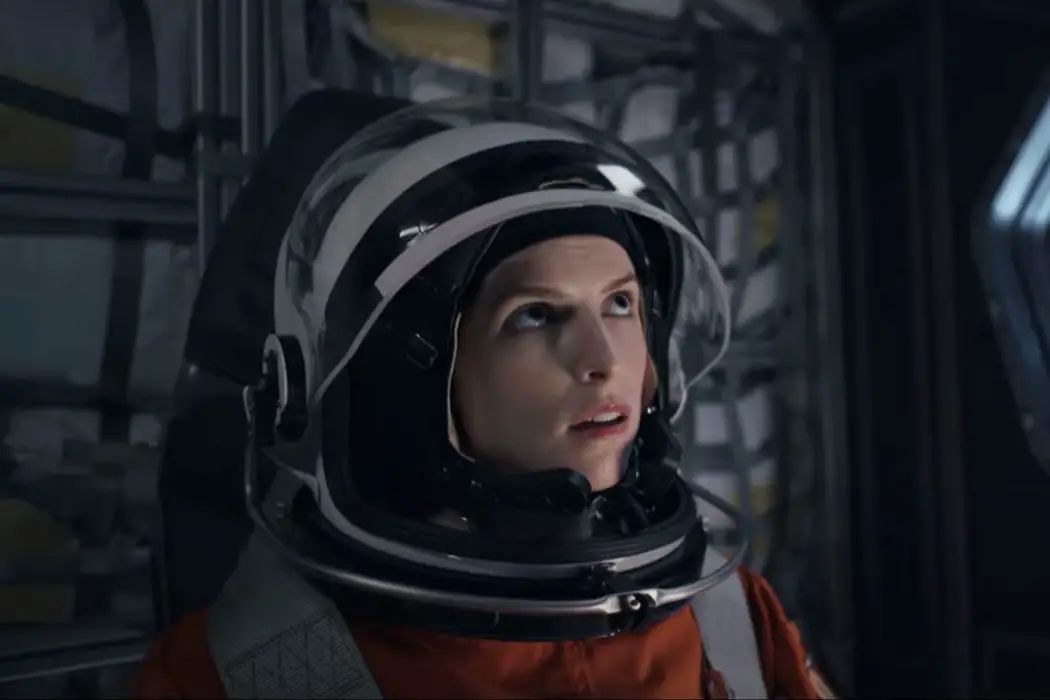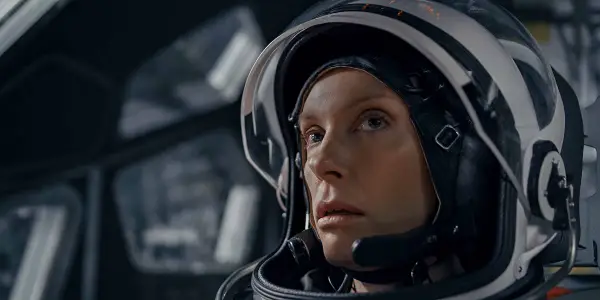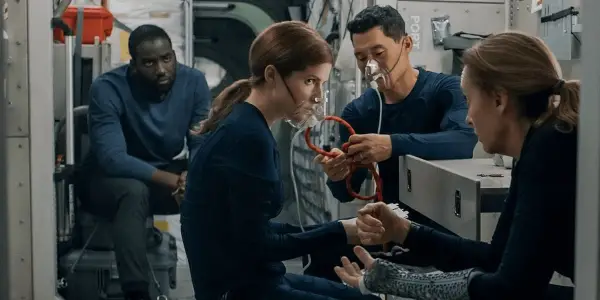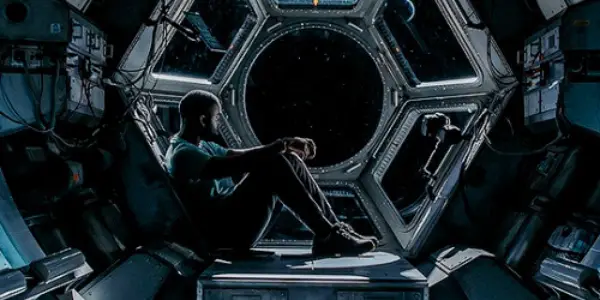STOWAWAY: Takes Time To Get This Mission Moving

Stephanie Archer is 39 year old film fanatic living in…
With the wealth of space-based films in the history of the movies, it is astounding the unrelenting amount of content filmmakers are able to generate. In a seemingly limitless space are a seemingly limitless amount of stories and adventures. Coupled with the undeniable beauty of the universe beyond our stratosphere, the recipe for success seems almost definite. Unfortunately, for Netflix’s latest film Stowaway, from writer and director Joe Penna, the beauty shines while the interest mostly falls flat, leaving viewers with a lackluster examination of survival and hope.
A Story Stowed Away Somewhere
Stowaway kicks off with a voice-over from the ground team counting down for an impending launch. As the opening credits are shown, there is a confidence and excitement in the ground controller’s voice, certainty, and hope for a successful launch apparent. As the voice-over continues, the film itself begins within the ship’s c*ckpit, bringing the camera around to reveal Dr. Zoe Levenson (Anna Kendrick), documenting both her anxiety and anticipation.
While everything appears to be going smoothly, an underperforming engine alarms Captain Marina Barnett (Toni Collette). For a moment, it appears the drama and intensity of the film is about to kick into high gear earlier than expected, creating anticipation for something more than the trailer had promised. As Marina prepares to abort the mission, confirmation from Hyperion’s ground control confirms they are still a go. This is one of the first examples of not only the distance between astronaut and earth but the limited power and knowledge of those in the control station – sometimes you need to just go with your gut.

Following the final burst to propel the ship into action and a sequence connecting the ship with the gravity spinner to allow for gravity on the ship, Stowaway continues without any disruptions or issues. There is a lackluster montage of the crew setting up the ship for their journey, as well as their individual tasks they are preparing for their arrival to Mars. And while these moments could have provided audiences with subtle and deductive clues into the personalities of the three astronauts, it remains regimented and cold – and uninteresting.
There is hope for more drama, for more of an intense narrative – per the promise of the film’s trailer – as the crew discovers the accidental stowaway in Michael Adams (Shamier Anderson). While it is never truly revealed how he managed to stay on board when the ship launched, there is a curiosity that surrounds him and his future interactions with the crew. While they are unsure how he can benefit the mission, a return to montage form shows how he is able to adjust and become an asset to the crew. Unfortunately, again it fails to garner the attention or investment that the filmmakers are looking for.
Action Stowed Away for Later
Now that is not to say that Stowaway does not deliver the drama, intensity, and edge of your seat moments that it initially promises, but not until the film’s second half. As they realize there are only enough supplies and oxygen for three, they must find away to survive or to make the ultimate sacrifice. These decisions are delivered and discussed more coldly than anticipated, with lackluster emotions, and at times, feeling like an initial table read. It is truly disappointing on the delivery of such a heavy-handed philosophical matter.

From the very beginning, it seems the mission itself was always destined to fail – the question of whether it was because of an extra person or a faulty ship is up for debate. From the very beginning, why were not all the technicians accounted for? How did Michael still remain on the ship during launch? Should the ship have continued beyond the alarm that the engines were underperforming? Was this a Titanic situation where there were not enough lifeboats to survive a disaster?
Stowaway wants to tackle these questions, to push viewers deep into the conversations of destiny and the value of life and hope. Yet, its pace is dragged out, the beginning of the film feeling more like filler. Yet, as soon as the pace picks up, Stowaway is able to wipe the beginning from memory, ingraining its second half – which unfortunately is not as rich in the philosophical quandaries as the first half should have been.
Stowaway may struggle in defining its investment and philosophy, but it succeeds in both its score and set design. The score is eerily unsettling, balancing between the mystical nature of space, which it is reflecting, and the off key notes of devastating reality. It is haunting as it is magical, contrasting the beauty of space with the deadly nature it can deliver.

The set design is outstanding as well, especially contrasted against the beauty of space. The ship itself is cold and hard, with a flat color palette throughout. The stars, glimpses of earth, and the wonders of space are all brought to life with a beauty I wish viewers had the opportunity to see on the big screen. Many of these shots would have lent themselves to gorgeous and breathtaking IMAX delivery. The constraints of the ship to space is brought together through one particularly large window of the ship (a window that calls back to both the Death Star window in the Emperor’s throne room in Star Wars and the window on Tony Stark’s space ship in Avengers: Endgame). The hard metal edges attempt to contain the beauty, yet it is always changing, always out of reach.
Conclusion: Stowaway
Stowaway had the potential to be an incredible examination into the views and philosophy surrounding survival and hope, yet delivers with a lackluster presentation. While the set design, score, and intensity of the film’s second half salvage much of the film, it’s the action rather than the philosophic contemplations that retain both audience attention and memory.
Have you seen Stowaway? What did you think? We want to know!
Stowaway is now on Netflix!
Watch Stowaway
Does content like this matter to you?
Become a Member and support film journalism. Unlock access to all of Film Inquiry`s great articles. Join a community of like-minded readers who are passionate about cinema - get access to our private members Network, give back to independent filmmakers, and more.













